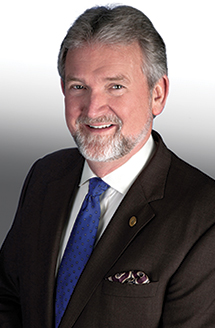
Dr. Herbek
We follow evidence-based guidelines to accommodate our “no blood” patients, who account for about 800 visits annually. Members of our staff are asked to sign a form attesting that they will abide by patient wishes in this regard; while we respect the right to decline, most have signed on. I think many of those who eventually agree to honor our patients’ values have done some serious thinking in the interim. At heart, it is all about respect for patient preferences and commitment to patient-centered care, our topic for this month.
The recent consensus statement defining the pathologist’s role in determining the eligibility of patients with low-risk prostate cancer for management via active surveillance (Amin MB, et al. Arch Pathol Lab Med. 2014;138:1387–1405) identifies criteria for evaluation of treatment options that can then be discussed with patients as part of shared decision-making. Pathologists collaborated with urologists, oncologists, surgeons, and radiation oncologists to develop the consensus statement, and the backstory, captured in a front-page article in the April 2015 issue of CAP TODAY, is great reading. The consensus statement and the article should interest anyone with responsibility for the precise communication skills and specimen management practices that active surveillance requires.
M. Elizabeth Hammond, MD, a consultant pathologist at Intermountain Healthcare and a professor of pathology and adjunct professor of internal medicine at the University of Utah School of Medicine, will moderate at CAP ’15 a scientific plenary on shared decision-making in prostate cancer screening, diagnosis, and treatment. Now that the consensus statement has been published, she says, each of us has to find the best way to enable the clinician and patient to engage in thoughtful discussion of management options. How do we talk about the specific risks and benefits of active surveillance, surgery, and radiation in each individual case? How can we enable patients to appreciate all the possible outcomes and understand that we can never know everything for certain?
Given the technical nature of our work and the accessibility of the electronic health record, pathologists need to start thinking about the terminology employed to communicate with clinicians and patients both orally and in our reports, says Dr. Hammond, who is a former chair of the Department of Pathology for UCR Hospitals (Intermountain Healthcare). Everything in the pathology report should be useful to the doctor and understandable to the patient, she says; we need to clarify and explain our diagnoses in a standardized way that reflects what we understand about what patients—and clinicians—want to know. The need to communicate clearly in pathology reports will become even more important as active surveillance is used more widely, meaning that patients and clinicians will be following progress as reflected in more reports. We can help them make the most of those conversations by providing clear content and using the same nontechnical words to say the same things each time.
The University of Washington in Seattle is the coordinating center for the largest active surveillance study in North America. They have been holding separate focus groups for physicians and patients to identify how best to frame pathology reports. John Gore, MD, MSHS, an associate professor in the UW Department of Urology, who will be on the panel at the CAP ’15 scientific plenary, was among the experts who drafted the consensus document. Dr. Gore’s clinical and surgical practice is primarily in kidney and bladder cancer while his research focuses on prostate cancer. He knows firsthand about the increasing pressure clinicians face to become evermore efficient while documenting the details of each patient encounter.
The need to protect time for patient counseling is one of the best reasons to adopt synoptic pathology reports, Dr. Gore says, and separate streamlined reports for patients in addition to the standard reports already in the EHR are well worth considering. If the clinician knows exactly where various types of information will appear in the report, patients will not need to wait anxiously while they search for it. A standardized, less technical vocabulary and stable format are more accessible to clinicians and to the increasing numbers of patients who access the EHR directly. The outcome will be clarity that enables patients to explore options with their clinicians more fully in less time.
One person who’s been studying these issues for a long time is Albert G. Mulley Jr., MD, MPP, director of the Dartmouth Center for Health Care Delivery Science and a professor of medicine at the Dartmouth Geisel School of Medicine. Dr. Mulley’s research has shown there are often wide gaps between what patients want and what physicians think they want. These “preference misdiagnoses” can harm patients, divert funds from needed health care services, and drive up overall costs. These consequences can be avoided, Dr. Mulley says, when there is clarity between physicians and patients about the outcomes that are possible and those that would be most valued. Perhaps most important, he says, recognizing the need for this clarity enables physicians to adopt a posture of humility about what they can know and what they cannot know without engaging their patients and learning what matters most to them.
As Dr. Hammond has been known to say, we may be the experts in what we do, but our patients are the experts in what they want.
Editor’s note: The CAP ’15 scientific plenary will take place in Nashville, Tenn., on Oct. 4 at 8 am. The speakers will be John Gore, MD, MSHS, and Jonathan Epstein, MD.
[hr]Dr. Herbek welcomes communication from CAP members. Write to him at president@cap.org.
![]()
 CAP TODAY Pathology/Laboratory Medicine/Laboratory Management
CAP TODAY Pathology/Laboratory Medicine/Laboratory Management
